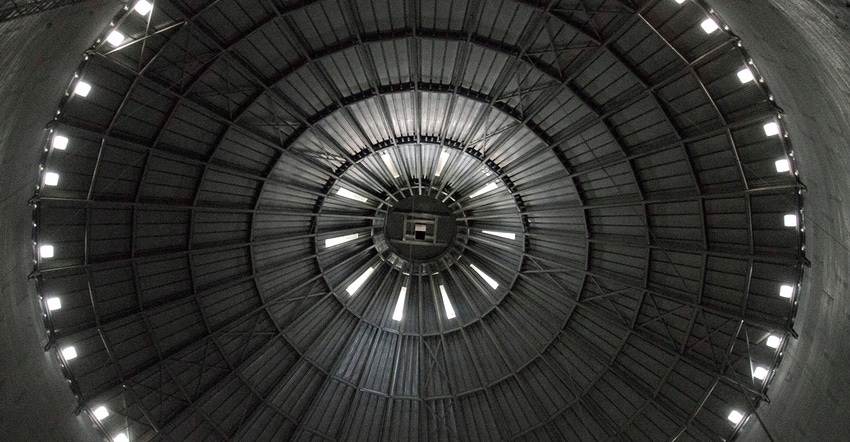
A grain bin often only has its mechanical components run for a few hours or days each year, and it sits with little use the rest of the year. The only exception would be grain aeration equipment.
This can make it more likely there will be an issue or failure when these key mechanical components are asked to perform than if they saw regular use, notes Gary Woodruff, GSI district manager in Indiana and Kentucky.
For example, cleaning and maintaining the electrical equipment, including breakers, is often overlooked, but is an important part of a dependable storage season, Woodruff says.
4 key areas
Here are four key equipment areas Woodruff suggests checking before harvest.
1. Fans and burners. Make sure they’re clean and free from obstructions. Some motors require grease every few years. Follow the manufacturer’s manual recommendations. Inspect the blade for damage, and make sure that the fan turns at full speed with no vibration. Some floor supports can move (with vibration) if grain is not present, so keep this test to a minimum check. The burners should have a service inspection at least every two or three years. All gas lines and gas components must be kept in excellent condition. A test firing of the burner before the season starts is a good way to head off problems on the first day of harvest.
2. Spreaders. If a spreader is in use, it often is overlooked. Make sure it’s still securely fastened in place, level, and that the motor or bearings are in good working order. Though difficult to reach, the spreader can be a source of cross-contamination between storage years if not cleaned.
3. Discharge and power sweep components. The discharge equipment isn’t usually used at harvest unless grain is to be immediately transferred — but before grain is put in the bin is the only time the discharge wells, and particularly the inside drive components of a power sweep, are accessible. Check the motor and service as necessary. Check the belts for damage and make sure they’re at proper tension. Replace if questionable. Lightly lubricate — preferably with food-grade lubricant — where grain comes into contact anywhere metal moves on metal, including the slide gates. Check any gear boxes present for gear-oil levels. Replace it periodically by the manual’s recommendations. Oil any chains and grease any grease points to make sure the system is ready for use.
4. Check roof vents. Another mechanical item often overlooked is the roof vents. Make sure they’re clean and open. One-tenth of cfm per bushel is a perfectly adequate aeration level, but today with cooling bins or low-temp drying bins, there are higher rates in use. The more air that moves, the more important vents become. Vents that have a small screen opening where debris can accumulate can get completely blocked in less than a year. This can greatly reduce airflow and potentially lead to a damaged roof if too much pressure builds up under the roof. Be safe while doing this cleaning. Proper fall prevention equipment should be used. Great care for your safety is a must any time you’re on a bin roof or in the air anyplace in your grain system.
About the Author(s)
You May Also Like




